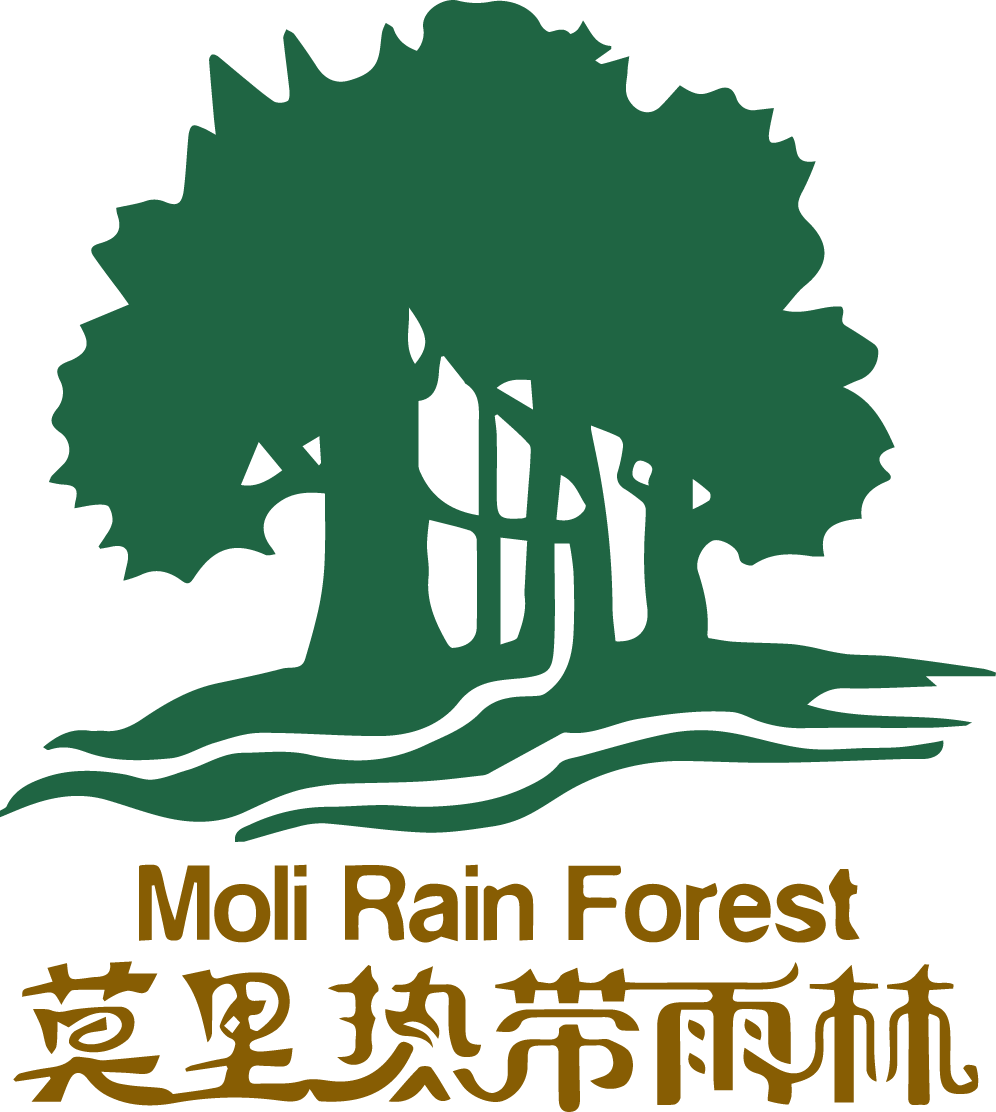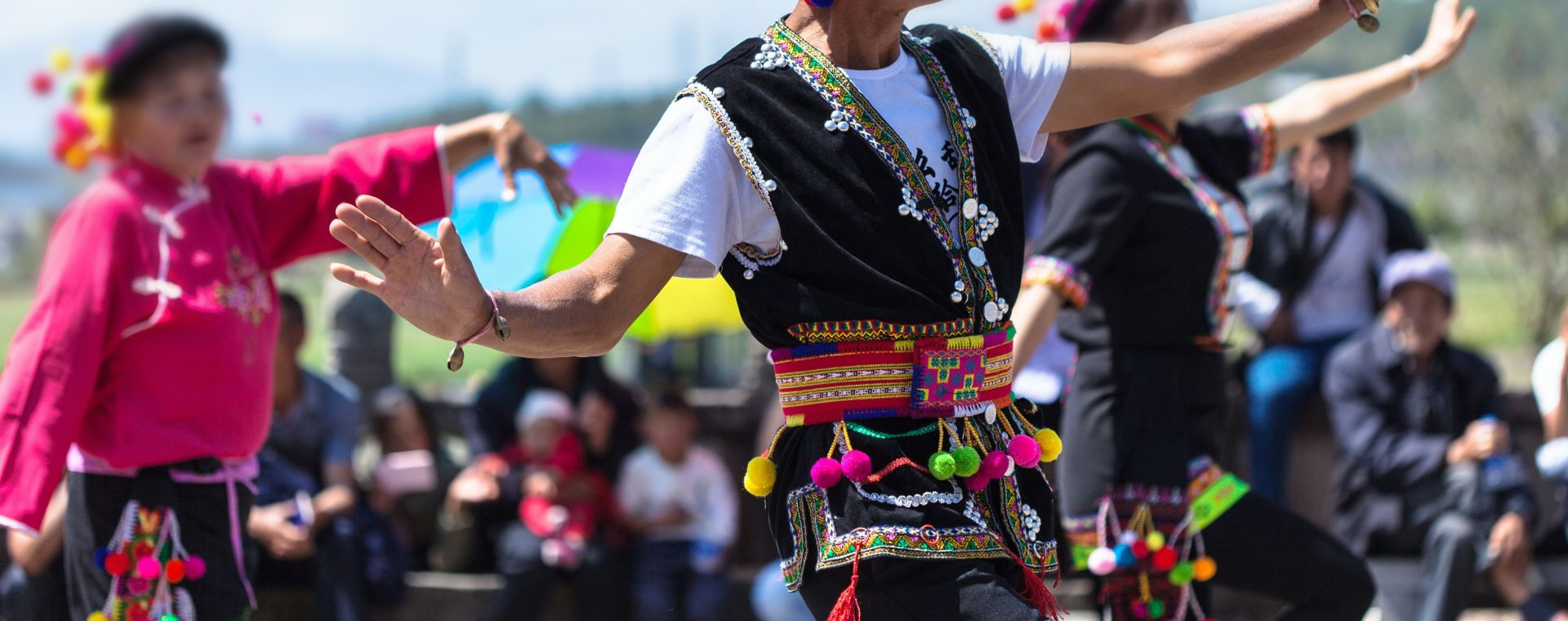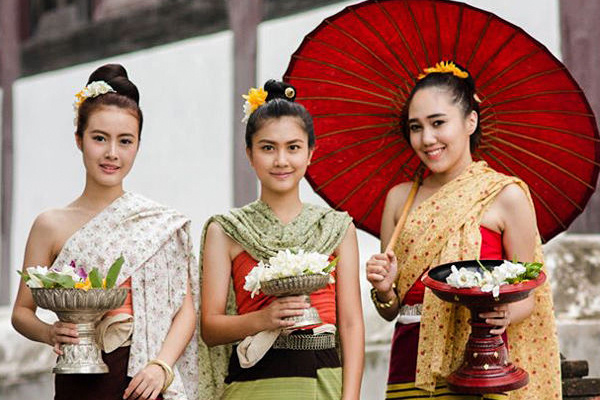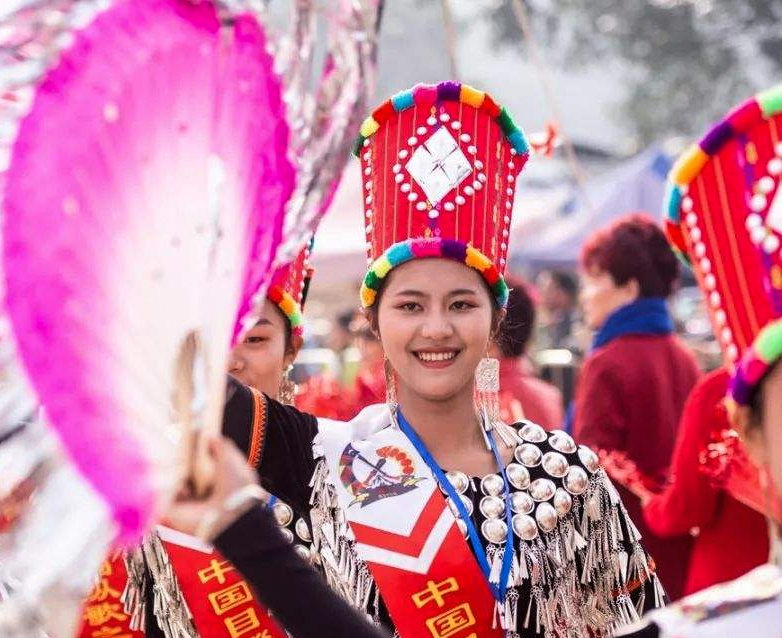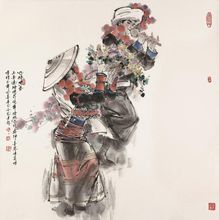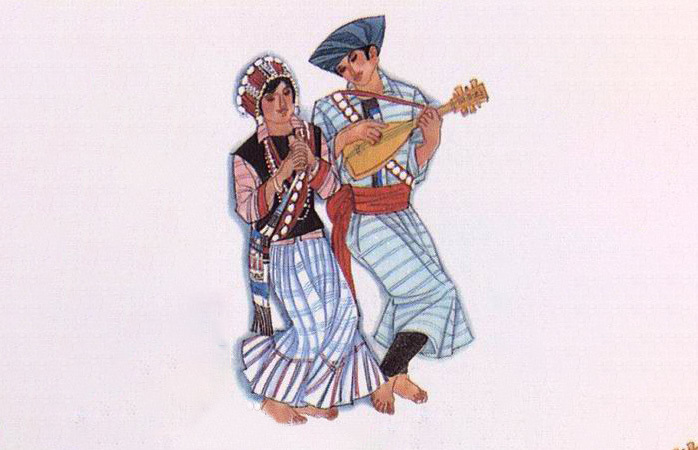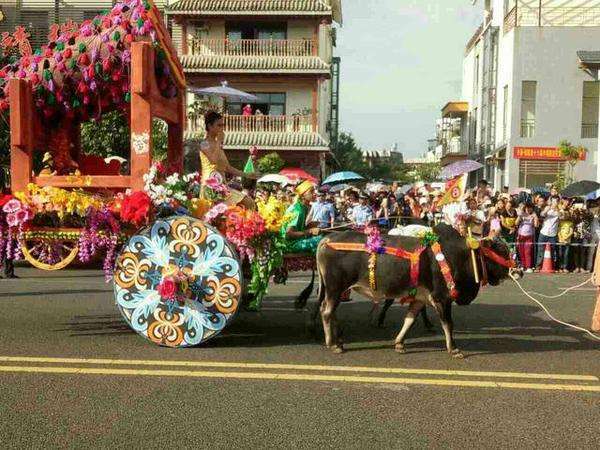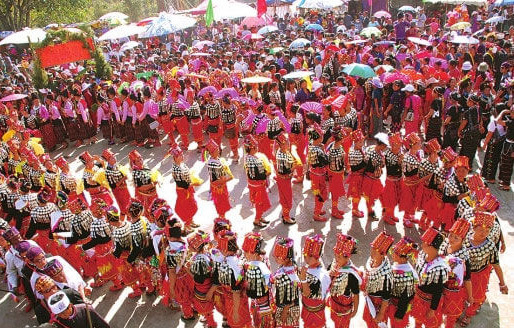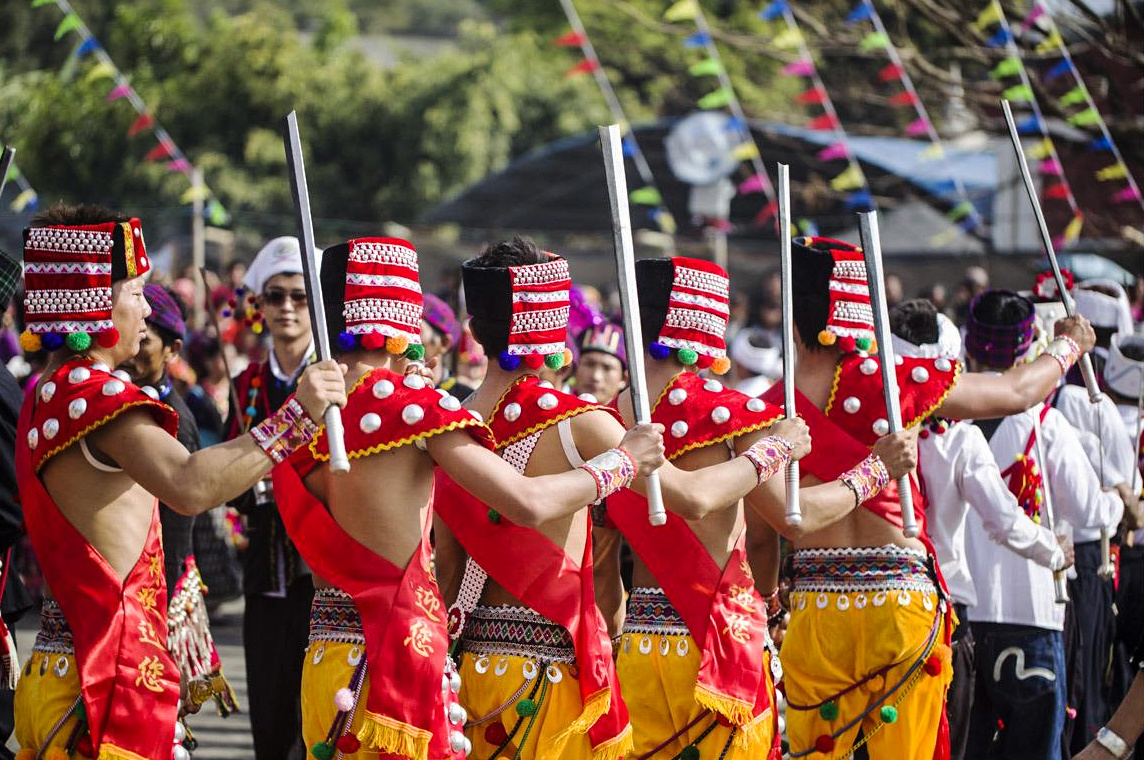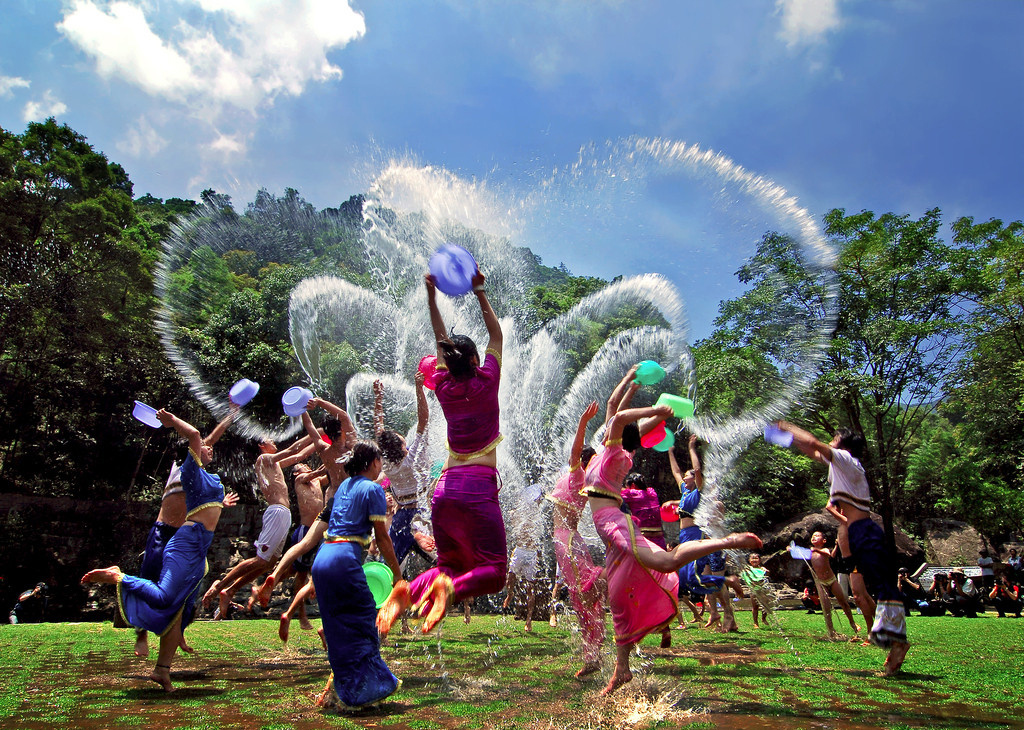Colorful Culture
Ruili, located in western Yunnan Province, belongs to Dehong Dai and Jingpo Autonomous Prefecture. The area is mainly inhabited by Han, Dai, Jingpo, Deang, Lisu and other ethnic minorities. It is a multi-ethnic settlement with cross-border populations of the same ethnicity and a fusion of diverse cultures, mysterious and colorful.
Colorful Culture
The Dai ethnic group is one of the main indigenous peoples of Ruili and is the largest ethnic minority in Ruili City. They are mainly distributed along the banks of the Ruili River in the towns of Jiexian, Nongdao, and Mengmao. Most of the Ruili Dai are native, with some having migrated from other areas. Due to regional differences, the Dai in this area are generally divided into three language branches: Daile, Daimo, and Daide. The Dai in the Ruili area have a long history and a developed culture. Precious Dai classics such as the "Palm-leaf Scriptures," "Hei Meng Gu Meng," and "E Bing and Sang Luo" have been discovered. There are also the famous Dai calendar, Dai opera, and Dai medicine. Dai men, women, and children in Ruili are skilled in singing and dancing. Famous dances passed down to this day include the "Peacock Dance," "Elephant Foot Drum Dance," and the large-scale folk group dance "Ga Yang," which can be considered masterpieces. Ruili has produced many talents in the Peacock Dance, with performers such as Mao Xiang, Yao Xiang, and Wang La being honored as ethnic folk dancers for their performances.
Learn More >
The Jingpo ethnic group is one of the main ethnic groups in Ruili, mainly distributed in the mountainous areas stretching from east to west, starting from Dengga, which faces Myanmar across the river in the west, to Mengli in Luxi Zhefang in the east, connected to Longchuan. According to the distribution of various branches, the Jingpo branch mainly lives in Dengga, Leinong, and Hulan; the Long'e branch mainly resides in Mengxiu and Nanjingli; the Leqi branch lives in Mengli and Nanjingli; the Zaiwa branch has a larger population, distributed in Huyu, Banling, Nongxian, Dengzha, Mengdian, Huwu, and other places. The Jingpo people originated from the Qinghai-Tibet Plateau and are descendants of the Di-Qiang ethnic group. There is a widely circulated folk legend among the Jingpo that their ancestors originated from "Mushi Bi Sheng Labeng" (northeastern Qinghai-Tibet Plateau). It is said they came from a distant place north of the sources of the Mailikai River and Enmeikai River. The weather there was very cold, with frequent snow, making it difficult to cultivate crops, so they migrated south. About a thousand years ago, they migrated southward along the Jinsha River, Nu River, and Enmeikai River, gradually settling in the mountainous areas around Dehong by the 17th century, with a history of more than 300 years.
Learn More >
The De'ang ethnic group is one of the indigenous peoples of Ruili. They are mainly distributed in the villages of Manghai, Guangsong, and Leigong in Huyu Township; Guangka, Leimen, and Nansang in Mengxiu Township; and Henanmao in Mengmao Town. Their residences are mostly located on the edges of basins at altitudes of 900 to 1000 meters and in subtropical mid-mountain forests, living relatively dispersedly. Their villages are often situated among the settlements of the Dai, Jingpo, and Han ethnic groups. The De'ang people are a nation that universally believes in Buddhism, and the best building in the village is the Zang House, which houses Buddha statues. Due to sharing the same religious beliefs as the Dai, many customs are similar to those of the Dai, with the main ethnic festival being the Water Splashing Festival. In addition, there are also the "Opening Door Festival" and the "Closing Door Festival."
Learn More >
The Lisu ethnic group is the fourth largest minority in the Ruili mountainous area, following the Jingpo, De'ang, and Han ethnic groups. They are mainly distributed in Dengzha Village Committee of Mengxiu Township and villages such as Banling and Banyang in Huyu Township of Ruili City. Their residences are mostly located in mountainous and semi-mountainous areas, characterized by large dispersion and small clusters. The women's clothing of the Lisu in Ruili is generally the same as that of the Lisu around Nujiang, wearing hats made of shells and beads, right-collared jackets, hemp long skirts, light-colored short waistcoats, and dark-colored padded jackets. They wear necklaces made of shells, beads, silver coins, and agate, with finely crafted clothing and beautiful patterns. Men's clothing generally includes black-blue head wraps and hemp long or short garments.
Learn More >
Ethnic Festivals
China-Myanmar Paukphaw Festival
The Chinese-Myanmar governments hold an annual China-Myanmar Brotherhood Carnival. The theme of the event is "Peace, Development, Auspiciousness, and Shared Joy." "Brotherhood" is a Burmese term meaning fellow brothers. The festival includes large-scale China-Myanmar cultural performances, water splashing celebrations, China-Myanmar bullock cart beauty contests, Miss Ruili pageants, ethnic costume contests, bullock cart races, folk sports competitions, bamboo raft races, elephant team performances, ethnic fireworks, water lantern blessings, as well as traditional Burmese rattan ball games and cockfighting, all activities that reflect the folk arts and shared interests of both countries. The event is generally held from May 3 to May 5 each year.
Learn More >
Kuoshi Festival — The Lisu People's Carnival
The Lisu ethnic group is the fourth largest minority in the Ruili mountainous area, following the Jingpo, De'ang, and Han ethnic groups. They are mainly distributed in Dengzha Village Committee of Mengxiu Township and villages such as Banling and Banyang in Huyu Township of Ruili City. Their residences are mostly located in mountainous and semi-mountainous areas, characterized by large dispersion and small clusters. The women's clothing of the Lisu in Ruili is generally the same as that of the Lisu around Nujiang, wearing hats made of shells and beads, right-collared jackets, hemp long skirts, light-colored short waistcoats, and dark-colored padded jackets. They wear necklaces made of shells, beads, silver coins, and agate, with finely crafted clothing and beautiful patterns. Men's clothing generally includes black-blue head wraps and hemp long or short garments.
Learn More >
Munao Singing and Dancing Festival - The Jingpo People's Carnival
The Munao Zongge Festival originally served as a sacrificial ritual to drive away evil and promote good, to wish for good fortune and happiness, and to celebrate a bountiful harvest. The Jingpo people call it "Munao," and the Dai Wa call it "Zongge," meaning everyone dances together. It is said that only the children of the sun can perform the Munao Zongge dance, which was later passed down to humanity by Ning Guanwa, the ancestor of the Jingpo ethnic group. During the festival, Jingpo men and women dress in festive attire and gather from all directions to sing and dance with abandon. The Munao Zongge dance is led by two highly respected "Naoshuang." The "Naoshuang" wear beautiful peacock feather crowns and, accompanied by graceful yet robust melodies, lead the dance at the front of the Zongge procession, waving shining silver knives in their hands. In the "Naoshuang
Learn More >
Water Splashing Festival — The Carnival of the Dai and De'ang Ethnic Groups
The Water Splashing Festival, also known as the "Buddha Bathing Festival," is a major festival of the Dai and De'ang ethnic groups in Ruili. In the Dai language, it is called "Shangjian," and the De'ang people refer to it as "Gongpai." It is said to have evolved from the Indian "Holi Festival" and the custom of bathing in sacred rivers. The Water Splashing Festival includes bathing the Buddha, praying for rain, welcoming spring plowing, and wishing for prosperity of people and livestock as well as a bountiful harvest. Within the Pali Buddhist cultural sphere, it is the most grand religious ceremony of the year. The first day of the festival is the Dai New Year's Eve, when every household cleans their home. Buma and Bushao dress in festive attire, beat elephant-foot drums and gongs, and go in groups to the mountains to pick "Shangjian flowers," decorate the water-splashing pavilion, and the elders at home slaughter chickens and cattle to prepare for the water splashing.
Learn More >
